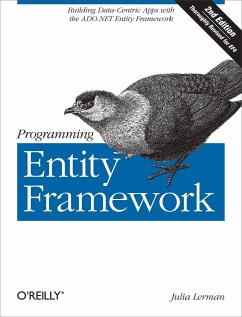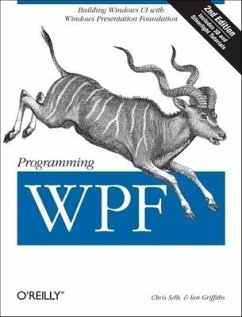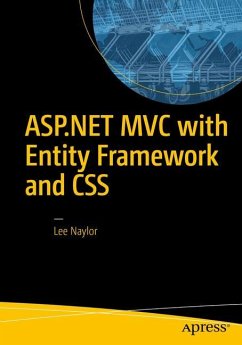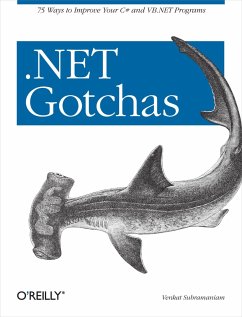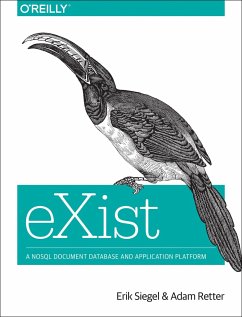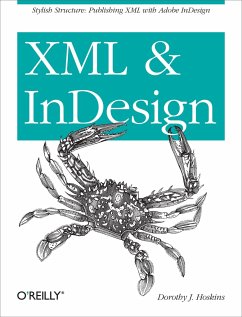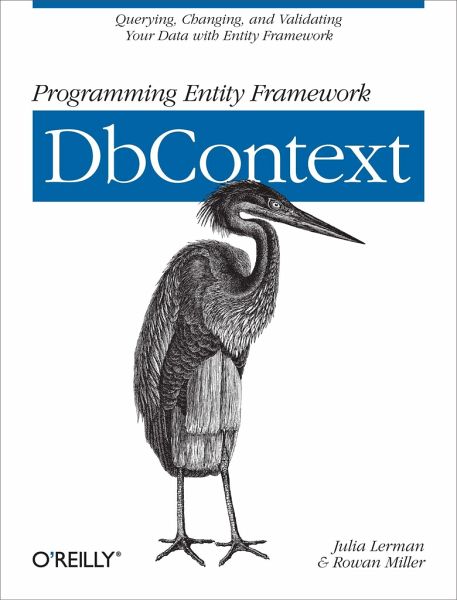
Programming Entity Framework: Dbcontext
Querying, Changing, and Validating Your Data with Entity Framework
Versandkostenfrei!
Versandfertig in über 4 Wochen
24,99 €
inkl. MwSt.
Weitere Ausgaben:

PAYBACK Punkte
12 °P sammeln!
The DbContext API captures Entity Framework s (EF) most commonly used features and tasks, simplifying development with EF. This concise book shows you how to use the API to perform set operations with the DbSet class, handle change tracking and resolve concurrency conflicts with the Change Tracker API, and validate changes to your data with the Validation API.With DbContext, you ll be able to query and update data, whether you re working with individual objects or graphs of objects and their related data. You ll find numerous C sharp code samples to help you get started. All you need is experi...
The DbContext API captures Entity Framework s (EF) most commonly used features and tasks, simplifying development with EF. This concise book shows you how to use the API to perform set operations with the DbSet class, handle change tracking and resolve concurrency conflicts with the Change Tracker API, and validate changes to your data with the Validation API.
With DbContext, you ll be able to query and update data, whether you re working with individual objects or graphs of objects and their related data. You ll find numerous C sharp code samples to help you get started. All you need is experience with Visual Studio and database management basics. Use EF s query capabilities to retrieve data, and use LINQ to sort and filter data Learn how to add new data, and change and delete existing data Use the Change Tracker API to access information EF keeps about the state of entity instances Control change tracking information of entities in disconnected scenarios, including NTier applications Validate data changes before they re sent to the database, and set up validation rules Bypass EF s query pipeline and interact directly with the database
With DbContext, you ll be able to query and update data, whether you re working with individual objects or graphs of objects and their related data. You ll find numerous C sharp code samples to help you get started. All you need is experience with Visual Studio and database management basics. Use EF s query capabilities to retrieve data, and use LINQ to sort and filter data Learn how to add new data, and change and delete existing data Use the Change Tracker API to access information EF keeps about the state of entity instances Control change tracking information of entities in disconnected scenarios, including NTier applications Validate data changes before they re sent to the database, and set up validation rules Bypass EF s query pipeline and interact directly with the database




